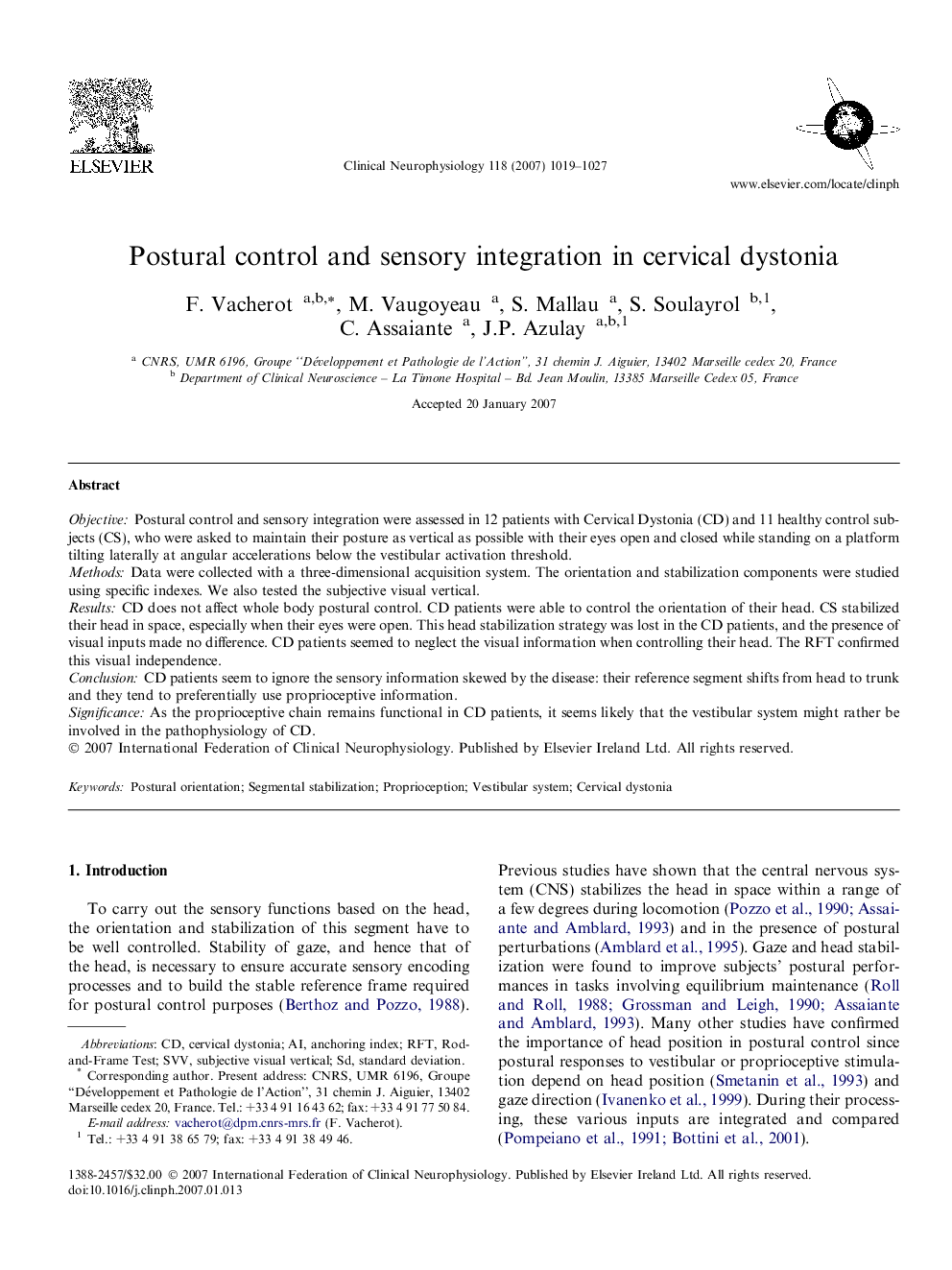| Article ID | Journal | Published Year | Pages | File Type |
|---|---|---|---|---|
| 3048523 | Clinical Neurophysiology | 2007 | 9 Pages |
ObjectivePostural control and sensory integration were assessed in 12 patients with Cervical Dystonia (CD) and 11 healthy control subjects (CS), who were asked to maintain their posture as vertical as possible with their eyes open and closed while standing on a platform tilting laterally at angular accelerations below the vestibular activation threshold.MethodsData were collected with a three-dimensional acquisition system. The orientation and stabilization components were studied using specific indexes. We also tested the subjective visual vertical.ResultsCD does not affect whole body postural control. CD patients were able to control the orientation of their head. CS stabilized their head in space, especially when their eyes were open. This head stabilization strategy was lost in the CD patients, and the presence of visual inputs made no difference. CD patients seemed to neglect the visual information when controlling their head. The RFT confirmed this visual independence.ConclusionCD patients seem to ignore the sensory information skewed by the disease: their reference segment shifts from head to trunk and they tend to preferentially use proprioceptive information.SignificanceAs the proprioceptive chain remains functional in CD patients, it seems likely that the vestibular system might rather be involved in the pathophysiology of CD.
